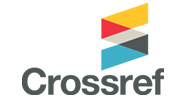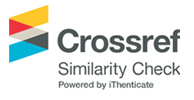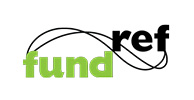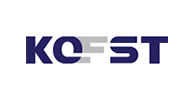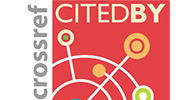Islands, covering only 5.3% of Earth’s land area, are repositories of biodiversity with numerous endemic species that have evolved independently of large-scale terrestrial migrations (Tershy et al., 2015). However, island ecosystems are degraded by invasive species, human development activities, and climate change (Vitousek, 1988;Lal et al., 2002;Chi et al., 2020). Therefore, continuous and comprehensive monitoring of island ecosystems is essential to identify rates of ecological change and formulate effective conservation strategies (Borges et al., 2018;Lee et al., 2024). Based on the characteristics of the island, this study investigated the insect fauna on Yeoseo Island, which serves as a suitable site for examining the impacts of climate change on species dynamics (Lee et al., 2012).
Yeoseo Island, located in Cheongsan-myeon, Wando-gun, Jeollanam-do, is a 2.51 km2 area with a 10 km coastline, in the southernmost Korean archipelago (Kim et al., 2014). This island is directly influenced by the high-temperature Tsushima Current, with the 352 m Yeho mountain rising at its center and its surroundings predominantly composed of the cliffed coastline (Lee et al., 2012). Although a previous study on the spider fauna of this island was conducted, no further research has been carried out over the past decade (Kim et al., 2012). However, as unrecorded insect species continue to be reported, further investigation of the island is essential (Lee et al., 2015;Shim et al., 2021;Han and Kim, 2023). This study aims to document the insect species diversity of Yeoseo Island, by investigating Lepidoptera (butterflies and moths), which are widely utilized as ecological indicators due to their diverse ecologies and habitats (Kanarsky, 2017).
Materials and Methods
Collection sites
The collections were conducted over two periods, from August 7 to 11 and August 21 to 23, 2023, targeting three sites closely associated with forested areas. The collection sites were marked on the map with red, green, and blue markers, and the corresponding coordinates and altitudes for each marker are as follows (Fig. 1): Red, 33°59'03''N, 126°55'14''E, 42m; green, 33°59'04''N, 126°55'22''E, 32m; blue, 33°59'14''N, 126° 55'13''E, 9m.
Specimen collection and preparation
During the daytime, specimens were collected using a sweep net through sweeping and netting methods. At night, samples were collected using a light trap (mercury vapor lamp, 220 V/400 W) and bucket trap (black light, 12 V/20 W). Attracted specimens were captured using tubes containing cotton soaked in 30% ammonia solution and stored in a freezer. The specimens were then pinned with wings spread, followed by drying in a 50°C oven for over three weeks.
Identification
To identify unrecorded species, abdomen dissection was conducted following the method proposed by Kim et al. (2017), using the EZ4 stereomicroscope (Leica, Germany). The specimens, along with the dissected abdomen and genitalia, were photographed using a Leica S8APO stereomicroscope equipped with a Tucsen Dhyana 400DC digital camera and a Leica LED 5000 HDI dome illuminator. Mosaic software (version 2.4, Tucsen, China) and Helicon Focus software (version 8.2.2 Pro, Helicon Soft, Ukraine) were used to create composite images from multi-focus photographs. Adobe Photoshop 2024 (version 25.7.0, Adobe, USA) was used to adjust the background and brightness of the pictures.
Results
This study presents 154 species, 135 genera, 57 subfamilies, and 27 families of Lepidoptera inhabiting Yeoseo Island in Table 1. The family Erebidae exhibited the highest richness with 31 species and 11 subfamilies. Including this, Fig. 2 provides a sunburst chart showing the abundance of families and subfamilies, with the number of species represented by relative area. Among the reported species, four management species designated by the Ministry of Environment are as follows (Fig. 3A-D): Dinumma deponens, Goniorhynchus exemplaris, Hedya auricristana, and Samia cynthia. These species, classified as biological resources requiring export approval, hold significant conservation value for biodiversity and require authorization from the Minister of Environment for international export (Ministry of Environment of Korea, 2019). Additionally, this study reports Ethmia lapidella (Walsingham) for the first time from Korea as an unrecorded species belonging to the genus Ethmia Hübner, which previously had limited information available in Korea, with only two species reported, including E. nigripedella Erschiff and E. xanthoplura Meyrick.
Systematic Accounts
Family EthmiidaeBusck, 1909
Ethmiidae Busck, 1909: 91. Type genus: Ethmia Hübner.
Genus EthmiaHübner, [1819]
EthmiaHübner, [1819]: 163. Type species: Phalaena pyrausta Pallas.
Ethmia lapidella (Walsingham, 1880) 북두칠성먹점뿔나방 (신칭) (Fig. 4)
Hyponomeuta lapidellusWalsingham, 1880: 86. Type locality: India, Punjab, Dharmsala.
Psecadia decempunctellaMatsumura, 1931: 1085.
Ethmia lapidellaKun, 2002: 173.
Diagnosis. This species is the most similar to E. heptasema (Turner), but differs in the number of black spots on the forewing. In E. heptasema, there are nine black spots on the pale gray forewing. However, in this species, the gray forewing exhibits a spot pattern almost identical to E. heptasema, but with an additional faint dark gray spot on the posterior margin near the apex. In male genitalia, this species is similar to E. dimauraorum Phillips, but has differences at the uncus and valva. In E. dimauraorum, the uncus is absent, and the apex of the valva is pointed, with a bundle of feather-like spines present nearby. But in this species, the uncus has the shape of a bifurcated tongue, and the valva is simple and rounded at the apex with no distinctive structures.
Description. Adult (Fig. 4A-C). Wingspan 16.3-20.6 mm. Head. Frons pale gray with pale brownish gray blotch at median; vertex gray; occupit gray with dark gray at the median. Antenna gray; dark gray from about 3/14 to apex; scape from 1/3 to apex dark gray at dorsal margin. Labial palpus pale gray with dark gray at the outer side of the lateral margin; second segment pale gray at the junction with the third segment. Thorax. Tegula gray with black blotch at the apex. Thorax gray; prothorax pale gray with black at the cephalic margin; mesothorax with black blotch symmetrically on the cephalic margin and a black fascia with silverous gray center on the caudal margin. Wing. Forewing gray; costal black, narrowing gradually from base to 1/4; six black spots from base to 1/2 excluding the posterior margin, spots forming a pentagonal shape with relatively regular intervals except for the weakly developed spot near the base, the second spot from the base an elliptical shape twice as large as the other spots; dark gray between the two spots on the costal margin; four spots with relatively regular internals forming a rectangular shape at from 2/3 to 7/8 excluding the posterior margin, the spot at posterior side dark gray and slightly larger than others, the remaining spots black; small black spots with regular intervals along the terminal line, gradually fading toward the base, not reaching apex; cilia pale gray. Hindwing ocherous gray, dark gray toward the apex; cilia pale gray. Abdomen. Abdomen ocher.
Male genitalia (Fig. 4D-E). Uncus bifurcated into two tongue-shaped with blunt apex, covered in setae. Valva semiarrowhead- shaped with blunt vertex, setae at the ventral margin and apex; costa flat, setae at the dorsal margin, apex pointed; sacculus with small sclerotized projection. Aedeagus convex dorsally, sclerotized caudally; apical patch of stimuli sclerotized with acute apex; vesica with two spine-shaped cornuti, sclerotized structure with serrated apex at the caudal margin.
Female genitalia (Fig. 4F). Papillae anales weakly sclerotized with some short setae. Apophyses posteriors long, wider cephalically; apophyses anteriores thick and short. Antrum sclerotized and short. Ductus bursae very long and slender, with multiple coils. Corpus bursae elliptical; signum bar-shaped, located 1/4 from the caudal margin, sclerotized plate on the cephalic margin with V-shaped emargination.
Material examined. 1♂ and 1♀, Korea, Jellanam-do, Wandogun, Yeoseodo-gil 29-38 (33°59'04''N 126°55'22''E), Altitude: 32m, 08 viii 2023 (leg. S. Kim and I.W. Jeong), gen. slide. no. IPE13308 (♂), 13309 (♀)/ In-Won Jeong; 1♀, Korea, Jellanamdo, Wando-gun, Yeoseo-ri 819-3 (33°59'14''N 126°55'13''E), Altitude: 9m, 10 viii 2023 (leg. S. Kim and I.W. Jeong), gen. slide. no. IPE13307/ In-Won Jeong.
Distribution. Korea (new record), China, India, Japan, and Taiwan (Kun and Szabóky, 2000).
Ecology. Two generations occur from March to May and September to October, with the larvae feeding on Ehretia resinosa Hance, 1880 (Boraginaceae) at Kaohsiung and Taiwan (Wei et al., 2007;Yen et al., 2009).
Discussion
This study reports the insect diversity of Yeoseo Island, isolated from the mainland, through a checklist of Lepidoptera. A total of 154 species from 27 families were identified, highlighting the island’s high biodiversity. Additionally, the significant biological and conservation value of the island was highlighted by reporting D. deponens, G. exemplaris, H. auricristana, and S. cynthia, which have been designated for protection by the Minister of Environment, along with one unrecorded species, E. lapidella. Regarding the ecology of the newly reported species, additional botanical research is needed to determine whether its host plants, which have not been recorded in Korea, are present in the region. Since the Lepidoptera collection was conducted only in August, when the biodiversity is at its peak, additional sampling during other periods is necessary to understand Yeoseo Island's biodiversity comprehensively.









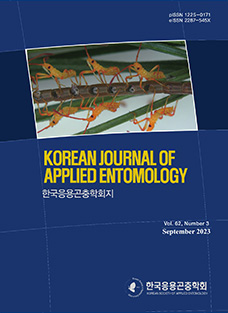



 KSAE
KSAE